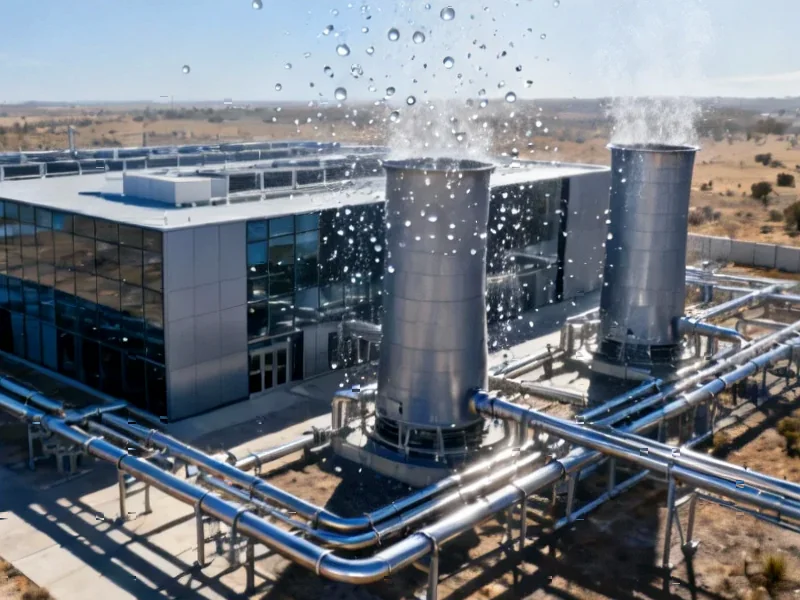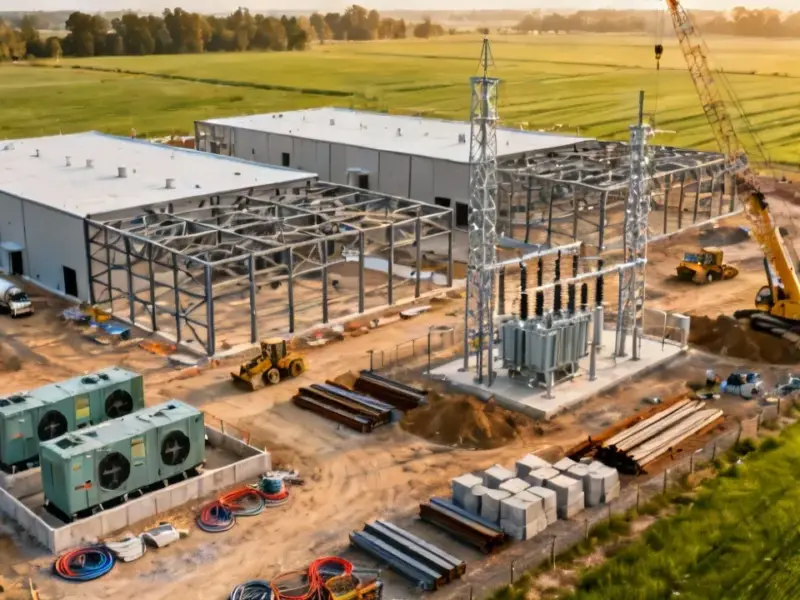According to DCD, a mystery company operating as Archbald I LLC filed two zoning permit applications on October 22 to build 22 data center buildings across two campuses in Archbald, Pennsylvania. The larger campus would feature 18 buildings on 410 acres north of Staback Park, while the smaller campus would host 4 buildings on 66 acres near the Archbald-Jermyn border. Each building would contain approximately 150,000 square feet, totaling 3.3 million square feet of data center space. This massive proposal comes just as local officials failed to pass new data center regulations during a special October meeting, leaving the borough without additional restrictions on where these facilities can be built.
<h2 id="pennsylvania-data-center-boom”>The Quiet Pennsylvania Data Center Boom
Here’s the thing about Archbald – this isn’t some established tech hub. It’s a borough in northeast Pennsylvania’s Lackawanna County that’s suddenly become ground zero for data center development. We’re talking about a region that now has eight data center projects either proposed or in development across the county. There’s Project Boson, Project Gravity, Wildcat Ridge – and those are just the ones we know about by name.
If all these projects actually get built, Eynon Jermyn Road could become one of the most data center-dense corridors in the country. We’re looking at nearly 4.73 million square feet of data center space across 29 buildings. That’s an insane amount of computing power for what was recently just another Pennsylvania borough.
The Mystery Developer Problem
Nobody knows who’s behind Archbald I LLC, and that’s becoming a pattern in these rural data center proposals. Companies use shell entities to quietly assemble land and file applications before locals even know what’s happening. It’s a strategy that prevents organized opposition from forming until it’s almost too late.
And honestly, can you blame communities for being wary? These aren’t small projects – we’re talking about facilities that will draw massive amounts of power, require significant water for cooling, and generate constant truck traffic and noise. When the developer won’t even put their name on the application, it naturally raises questions about their intentions and commitment to being a good neighbor.
The Regulatory Vacuum
The timing here is fascinating. The borough council literally just held a special meeting in October to consider adopting data center regulations, and the motion failed because nobody would second it. Many locals actually spoke against the proposed ordinance because they wanted even stricter restrictions.
So now we have this perfect storm: no new regulations in place, and a mystery company swooping in with the largest data center proposal the area has seen yet. The applications were filed just days after that failed ordinance vote. Coincidence? Probably not.
This is becoming a classic pattern across rural America. Communities without existing data center regulations suddenly find themselves facing billion-dollar development proposals they’re completely unprepared to handle. The companies have teams of lawyers and experts, while local planning boards are volunteers who might never have seen a project of this scale before.
What Comes Next?
The real question is whether Archbald can handle this much development all at once. We’re not just talking about the 22 new buildings from this proposal – there are multiple other projects in various stages of planning. The local power grid, water resources, and road infrastructure weren’t built for this kind of industrial demand.
And let’s be honest – the economic benefits might be tempting for a community like Archbald, but the costs could be substantial. Data centers create relatively few permanent jobs compared to their physical footprint and resource consumption. They’re essentially giant warehouses for computers that primarily benefit distant tech companies.
What happens next will likely set the tone for data center development across rural Pennsylvania. If this project sails through without meaningful community input or proper regulation, it could open the floodgates. But if locals push back and demand better terms, it might force developers to actually negotiate rather than just dictate terms.




